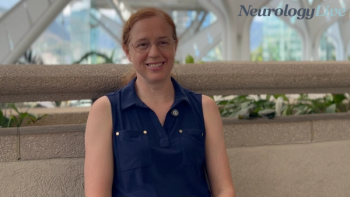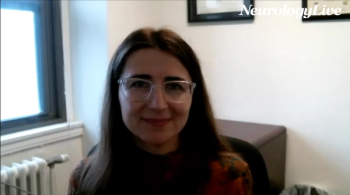
Apomorphine Sublingual Film Displays Efficacy in Elderly Patients with Parkinson Disease
Key Takeaways
- Apomorphine sublingual film showed similar efficacy in PD patients above and below 70, with significant MDS-UPDRS Part III score reductions.
- The study demonstrated consistent full-on responses within 30 minutes post-dose across both age groups over 48 weeks.
A post-hoc analysis study revealed apomorphine sublingual film was efficacious over a long term period across various age ranges, including elders, with Parkinson Disease.
Presented at the 2025 International Congress of Parkinson’s Disease and Movement Disorders (MDS), a long-term, post-hoc analysis of a previous completed phase 3 study found that the efficacy of apomorphine sublingual film (SL-APO; Kynmobi; Sunovion) did not differ in patients with Parkinson disease (PD) regardless of whether patients were above the age of 70. Overall, both elders and younger patients on treatment achieved a clinically meaningful reduction in the Movement Disorder Society – Unified Parkinson Disease Rating Scale (MDS-UPDRS) Part III.
The phase 3, multicenter, non-randomized, open-label Study CTH-301 (NCT02542696) assessed the long-term safety, tolerability, and efficacy of SL-APO in patients with PD, with patients split based on age (<70: n = 253; >70: n = 116). Spanning over 3 years, the trial’s primary outcome measured MDS-UPDRS Part III score from pre- to post-dose at weeks 24, 36, and 48, and the percentage of patients with a full-on response within 30 minutes post-dose in those same weeks.
Overall, results showed that 75.7% of patients aged at least 70 years achieved a full-on response within 30 minutes post-dose in week 24 with 93.8% and 77.8% seeing a full-on response in week 36 and 48, respectively. Similarly, full-on responses were recorded in 79.3%, 78.9%, and 84.8% of patients under the age of 70 in week 24, 36, and 48, respectively.
Led by Frandique Moreira, MD, a neurologist from CUF Coimbra Hospital and CUF Leiria Clinic, findings indicated that patients in both treatment groups experienced a mean decrease in MDS-UPDRS Part III score at each interval from pre-dose to 15, 30, 60, and 90 minutes post-dose. The mean SL-APO optimized dose was similar for both groups with those younger than 70 receiving 19.6 milligrams and those at least 70 receiving 21.2 milligrams (P = 0.09).
The post-hoc analysis, presented at MDS 2025, included 253 patients aged less than 70 and 116 patients no younger than 70. Notably, the analysis included de novo patients who were exposed to the drug for the first time. Encouragingly, the rate of discontinuation due to lack of efficacy was comparable across age groups (<70 years: 6.3% [16/253] vs >70 years: 6.0% [7/116]).
The analysis stems from the an initial phase 3 trial that evaluated the long-term safety, tolerability, and efficacy of SL-APO for the treatment of off episodes in patients with PD. Published in the Journal of Neurology, SL-APO was found to be generally well tolerated and efficacious over the long term as an on-demand treatment for OFF episodes in patients with PD.
In the open-label study, investigators observed a clinically meaningful reduction in MDS-UPDRS part III score as soon as 15 min following administration of SL-APO, with peak effects observed approximately 30 min post-dose and sustained up to 90 min post-dose. Notably, these results were consistent over the course of 48 weeks. Overall, 496 patients were included and 120 (24.2%) completed the long-term safety phase.
Treatment-emergent adverse events (TEAEs) related to the study drug were experienced by 65.3% of patients with the most common events including nausea (6.0%), stomatitis (1.8%), lip swelling (1.8%), and dizziness, oral mucosal erythema, and mouth ulceration all at (1.6%). TEAEs leading to study drug withdrawal were experienced by 34.0% of patients with the most common including nausea (5.4%), lip swelling (4.5%), mouth ulceration (2.6%), and stomatitis (2.3%).2
References:
1. Moreira F, Wojtecki L, Jost W, et al. Apomorphine Sublingual Film’s Efficacy in Elderly Patients with Parkinson’s Disease: Post-hoc Analysis of Study CTH-301. Presented at: 2025 MDS Congress; October 5-9; Hawaii. Abstract S516
2. Kassubek J, Factor SA, Balaguer E, et al. Long-term safety, tolerability and efficacy of apomorphine sublingual film in patients with Parkinson's disease complicated by OFF episodes: a phase 3, open-label study. J Neurol. 2024;271(6):3554-3570. doi: 10.1007/s00415-024-12323-2
Newsletter
Keep your finger on the pulse of neurology—subscribe to NeurologyLive for expert interviews, new data, and breakthrough treatment updates.








































